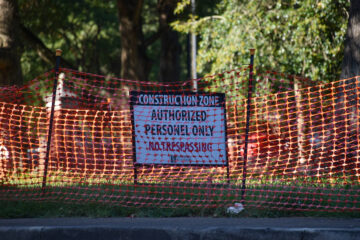Laughs and quiet contemplation filled Dina’s Place as political cartoons and cartoonists took the stage for the third event in the News Literacy and Future of Journalism series on Oct. 23.
Pulitzer Prize-winning cartoonist Kevin Siers of the Charlotte Observer and international award-winning cartoonist Robert Ariail spoke about their work, the challenges and benefits of a career in political cartooning, the role of their work in journalism and public discourse and their inspirations for creating these pieces.
Guy Reel, department chair for the mass communication department, said that there is a great misunderstanding of the purpose of political cartoons and that the mass communication and political science departments wanted to inform students on the importance of these political cartoons.
“They’re like editorials in general. People think they should be fair and balanced, and maybe objective, it’s actually the opposite…A cartoon is there to make a statement. You may not agree with it, but it’s also there to make a statement, inform and entertain,” Reel said.
Terry Plumb, who was recognized by the South Carolina Press Association for his service to journalism in 2007, led the discussion and conversation following both cartoonists’ presentations.
“Over their careers, they had the occasion to comment on the biggest stories we’ve had in the Carolinas, including the fight over bathroom access and gender, Mark Sanford’s Appalachian hike… taking down the Confederate flag at the statehouse in Columbia… as well as Hurricane Hugo, Floyd, Florence and Michael,” Plumb said.
Siers has been working at the Charlotte Observer since 1987 and has been cartooning for 31 years. He said that political cartoons have a place in American democracy and politics.
“Editorial cartooning has been around since America has been around. It has always been a part of our democracy… To share ideas, to share opinions, to talk about the future of the nation, the future of the community — and cartoonists play a big role in that,” Siers said.
He also said that editorial cartoonists utilize satire, exaggerations, humor, symbolism and absurdity for call to actions, advocacy or introducing new perspectives.
“Everyone is funny-looking, I’m sorry. To take that and make a point out of it — that kind of thing keeps us going all the time… All editorial cartooning is a form of communication. We have an idea, we want to get that idea across as quickly as possible, so it really works well to draw someone’s caricature really well to get across what you want to say about that person,” Siers said.
Robert Ariail used the symbols of Palmetto State “to make a point” with his cartoons. He mirrored the South Carolina state flag, but added garbage clamoring toward the top of the Palmetto. Titling the cartoon “The Landfill State,” it was a commentary on how, historically, South Carolina was receiving income from taking on other state’s trash.
Ariail also used the “Join, or Die” cartoon to reference the U.S. energy policy by using the snake as a gasoline hose and the different body parts, such as conservation, coal, solar power and nuclear energy. He said that these cartoons give a new take on an old cartoon like “Join, or Die.”
“You take an iconic symbol and twist it a little bit to create a new meaning… We need to join the various parts of it to have a successful energy policy,” Ariail said.
The next News Literacy event will be on Tuesday, Oct. 30 at 7:00 p.m. in Richardson Ballroom. It will be a panel of guests that will discuss the role of opinion writers in today’s partisan and ideological media environment. Guests will include Pulitzer Prize winner Maria Henson and Vilissa Thompson, a disability rights advocate.



